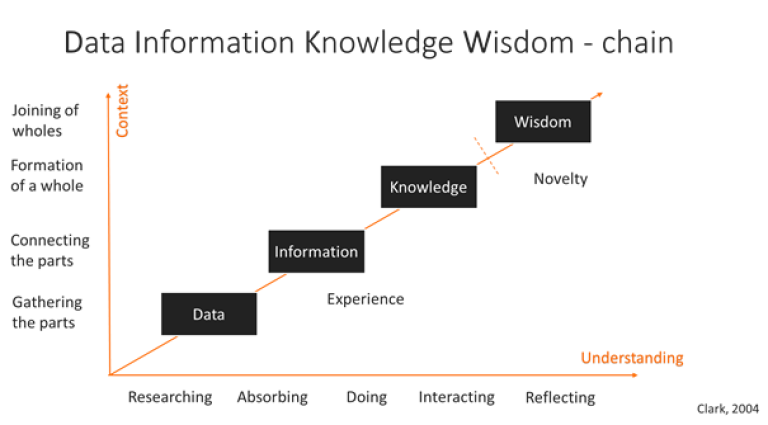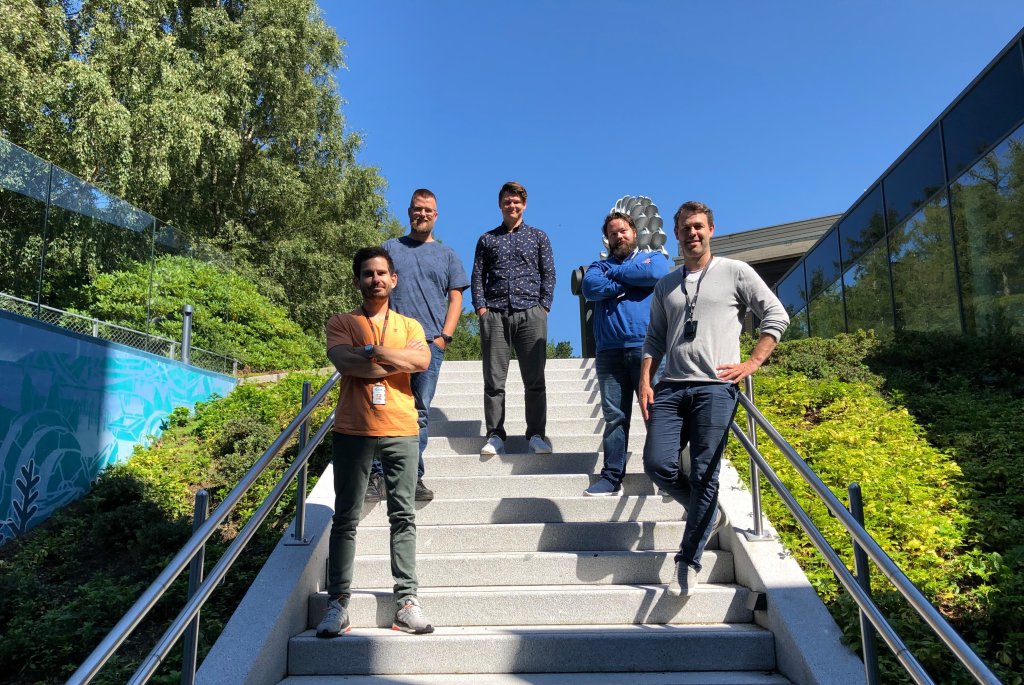Information Strategy in times of disruption
The current Covid-19 crisis has changed the circumstances companies are navigating through, fast and severely. Ensuring cash-flow, cutting costs significantly, and focusing on the core business are critical measures to survival. But contingency plans often lack a vital part: Information Assets.

An Information Strategy can help gain faster insights to trustworthy data, can improve information structure and even ensure rapid knowledge transfer. The trick is to focus on content, the What instead of the How.
What is Information Strategy?
Information Strategy is a strategic, content-centric plan to ensure a holistic approach to achieve the objectives in the management of the company’s data, information, and knowledge. This will enable the company to create a deeper understanding of its information, to gain wisdom.

An Information strategy should be part of the strategic business planning and superior to an IT strategy. By implementing an Information Strategy prior to any IT strategy, your company gains a clear understanding of what you need to manage before you think about how to manage it.
The distance between IT and the business needs will be cut short as part of the holistic content-centric approach.
Instead of focusing on technical solutions, ask the following:
- What data is trustworthy and valuable to review?
- What information does the business need?
- What information is essential to manage everyday operations and how is it regulated?
- What knowledge resides with the employees?
An Information Strategy is not an IT task, but relevant for the entire business and should therefore be part of and shape the core business.
Why is Information Strategy relevant right now?
An Information Strategy can ensure concentrated and focused resources during times of disruption. The following 8 examples are to illustrate how you can benefit from an Information Strategy:
1. Trust your data
A strategic approach to ensure that the data you base your decisions on is trustworthy. What data should be made available? To what degree should you be critical to our data sources? How do you define data quality?
2. Find relevant information fast
The more information a company captures, manages, analyses and preserves, the harder it is to find the relevant information. Asking the right questions is one part, but how to drill down to what you actually want? And what is it you want to find, in which circumstances?
3. Information classification and protection of what is important
A content centric approach to Information Classification is essential to ensure that you protect what is important. An Information Strategy can define a vision for information asset protection that is based on business needs and risk-evaluated. In times of home office and dissimilated teams, where information is shared through different networks and collaborative environments, information asset protection becomes more important than ever.
4. Ensure knowledge transfer
Cost reduction and focus on core business can ultimately lead to furloughed employees, cut down on contractors, or even more permanent reduction of active workforce. A server problem that arises is the potential loss of knowledge. An Information Strategy can ensure that the essential operative knowledge is codified as explicit knowledge and can be transferred. But also, techniques and methods for extracting tacit knowledge can be systemized through a strategic approach to knowledge management.
5. New digital lifestyle
Social distancing, home office and remote work environments will in some form continue to be a part of our work life. An Information Strategy can help define new data, information, and knowledge needs and secure that new tools are aligned with those needs.
6. Regulatory barriers to information sharing
Regulatory agencies have for a long time tried to regulate the digital information flow. Restrictions to data sharing, data storage had been hugely important to guarantee privacy, fairness in the marked, copy rights or even company or state secrets. The new remote and dissimilated work environment due to social distancing will eventually have an impact on these regulations. With an Information Strategy you can ensure that you have a clear action plan and that you can react to changes to regulatory barriers.
Where not to start?
In times of disruption a focus on the core business seems to be the most logical. But this can lead to some vital mistakes, mainly because Information Assets are not accounted for.
Starting to save at the wrong end, entails:
- Reduction on digitalization projects
- Reduction on information sassy staff
- Confusion of crisis management with long-term strategy
Where to start?
To secure your Information Assets there are five steps to be taken, from choosing the right methodologies, to securing vital knowledge to building a holistic, content centric Information Strategy.

The current Covid-19 crisis will emphasize the importance of a good Information Strategy and demonstrate the benefits of a comprehensive approach to data, information and knowledge.




